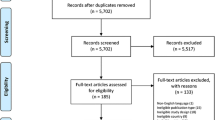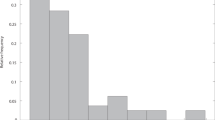Abstract
Objective
To estimate the relationship between size of intensive care unit and combined intensive care/high dependency units and average costs per patient day.
Design
Retrospective data analysis. Multiple regression of average costs on critical care unit size, controlling for teaching status, type of unit, occupancy rate and average length of stay.
Setting
Seventy-two United Kingdom adult intensive care and combined intensive care/high dependency units submitting expenditure data for the financial year 2000–2001 as part of the Critical Care National Cost Block Programme.
Interventions
None.
Measurements and results
The main outcome measures were total cost per patient day and the following components: staffing cost, consumables cost and clinical support services costs. Nursing Whole Time Equivalents per patient day were recorded. The unit size variable has a negative and statistically significant (p<0.05) coefficient in regressions for total, staffing and consumables cost. The predicted average cost for a seven-bed unit is about 96% of that predicted for a six-bed critical care unit.
Conclusion
Policy makers should consider the possibility of economies of scale in planning intensive care and combined intensive care/high dependency units.
Similar content being viewed by others
References
Gyldmark M (1995) A review of cost studies of intensive care units: problems with the cost concept. Crit Care Med 23:964–972
Metcalfe A, McPherson K (1995) Study of provision of intensive care in England, 1993: revised report for Department of Health—January 1995. Report for Department of Health
National Confidential Enquiry into Perioperative Deaths (NCEPOD) (2000). Functioning as a team: the 2002 report of the National Confidential Enquiry into Perioperative Deaths. NCEPOD, London
Audit Commission (1999) Critical to success: national report. Audit Commission, London
Department of Health (2000) Comprehensive critical care: a review of adult critical care services. DOH, London. www.doh.gov.uk/nhsexec/compcritcare.htm. Accessed 15 August 2003
Groeger JS, Strosberg MA, Halpern NA, Raphaely RC, Kaye WE, Guntupalli KK, Bertram DL, Greenbaum DM, Clemmer TP, Gallagher TJ et al. (1992) Descriptive analysis of critical care units in the United States. Crit Care Med 20:846–863
Long MJ, Ament RP, Dreachslin JL, Kobrinski EJ (1985) A reconsideration of economies of scale in the health care field. Health Policy 5:25–44
Chang C, Tuckman HP (1986) Will economies of scale always reduce cost? An economic analysis of the effects of hospital expansion. J Health Hum Resources Admin 8:249–261
Tibi-Levy Y, de Pouvourville G, Rozenholc Y, Goursot G, Clergue F, Delemontey B, Feiss P, Laxenaire MC, Marty J, Beresniak A (1998) Evaluation of benefits related to reduced length of stays in postanesthesia care units. Int J Technol Assess Health Care 14:172–179
Dranove D (1996) Economies of scale in non-revenue producing cost centers; implications for hospital mergers. J Health Econ 15:685–713
Fordham R, Field DJ, Hodges S, Normand C, Mason E, Burton P, Yates J, Male S (1992) Cost of neonatal care across a regional health authority. J Public Health Med 14:127–130
Edbrooke D, Hibbert C, Ridley S, Long T, Dickie H (1999) The development of a method for comparative costing of individual intensive care units. The Intensive Care Working Group on Costing. Anaesthesia. 54:110–120
Dean JE, Edbrooke DL, Corcoran M (2002) The critical care national cost block programme: implementing a standard costing methodology on a national scale. Care of the Critically Ill 18 No.3, Stockton Press, UK
Jacobs P, Edbrooke DL, Hibbert CL, Fassbender K, Corcoran MC (2001) Descriptive patient data as an explanation for the variation in average daily costs in intensive care. Anaesthesia 56:643–647
Rapoport J, Teres D, Zhao Y, Lemeshow S (2003) Length of stay data as a guide to hospital economic performance for ICU patients. Med Care 41:386–397
Reis Miranda D, Willams A, Loirat Ph (eds) (1990) Management of Intensive Care. Kluwer, Amsterdam
Jones J, Rowan K (1995) Is there a relationship between the volume of work carried out in intensive care and its outcomes? Int J Technol Assess Health Care 11(4):762–769
Author information
Authors and Affiliations
Corresponding author
Rights and permissions
About this article
Cite this article
Jacobs, P., Rapoport, J. & Edbrooke, D. Economies of scale in British intensive care units and combined intensive care/high dependency units. Intensive Care Med 30, 660–664 (2004). https://doi.org/10.1007/s00134-003-2123-2
Received:
Accepted:
Published:
Issue Date:
DOI: https://doi.org/10.1007/s00134-003-2123-2




